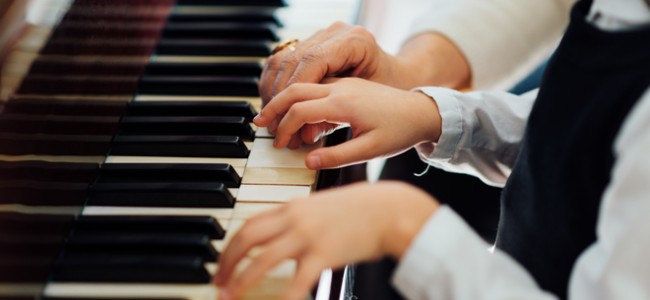
As with any skill or talent that we pursue, practice makes perfect. In order to master any technique, we need to form and expand our knowledge and work on it tirelessly. Learning to play the piano is a fantastic skill to master, but without doing some finger exercises, you will not be able to progress.
Fortunately for us, medieval finger stretching devices and ominous headmistresses with hard-hitting rulers are a thing of the past. Piano finger exercises, however, will always be relevant - as long as we still have the passion to play, that is.
But wait!
Before running off toward performances at renowned concert halls or making that tick on your bucket list, we need to lay the foundation and make sure that your fingers – essentially the tools of your trade – are in tip top condition.
So Why Practice?
It's no secret...you will have to dedicate a terrible amount of time to your finger exercises, but here's the top 5 reasons why you will be exercising your finger daily:
- Essential muscles will be strengthened – not only in your fingers, but also in your shoulders and hands
- Technique and skill will improve
- You will be creating keyboard awareness
- You will be creating "muscle memory" – playing naturally and without much need for thinking about your technique
- Properly placed fingers will minimize or avoid injuries
Remember!
It is up to you to decide the length of time that you would like to dedicate to each of the exercises below, but do so until you feel comfortable and confident with each exercise. Whenever possible, practice daily as this will help your fingers and hands strengthen faster. And remember, for every hour you practice, take a 10 – 15-minute break in between.
Tips for Good Piano and Finger Techniques
You might not realize it, but the release of notes require more strength than the actual pushing down of them!
Here are some valuable tips to help you along:
- When starting out, it's recommended practicing with each hand separately.
- Focus on playing with firm, curved fingers. To do this, start out by putting your hands over your knees and then lifting it to the piano in that exact position.
- Sit up straight and in the middle of the bench in order to avoid slouching. Always remember that your shoulders should be relaxed and not raised. Correct posture will help you increase your practice time while seated in one position for an extended period.
Piano Finger Exercises for Beginners
So, without further delay, here are 7 of the best piano finger exercises for beginners to help you develop a bit of strength and independence in your fingers.
1. Warming up
Warming up before you play is essential.
Straighten your arms and hold your hands in front of your body, as if pushing against a door. Next, relax your wrists and move your hands in a slow circle, first clockwise and then counter-clockwise.
Bring your flat hands together (palms and fingers touching) and then spread your elbows to the sides. In a slow manner, point your fingers toward yourself, then away from your body and lastly toward the ground. Repeat this exercise a few times to help loosen and warm up your hands.
2. One-Handed C Major Pentascale (C D E F G)
Now that you've warmed up, let's play a pentascale. A pentascale - penta meaning 5 - is a scale consisting of 5 notes.
To start this exercise, place your right hand on the C Major pentascale (your thumb being on the C and your pinky finger on the G). This scale will begin and end with C.
Starting with your thumb, play the scale through and then ascend back down to C. So, to complete this exercise, you will be playing C D E F G F E D C. Once you have a feel for the scale, play it again, but this time, repeat each note 4 times whilst keeping the same tempo.
Repeat the pentascale with your left hand too - pinky finger on C and thumb on G.
* To add another element to your practice, you can also do this exercise whilst playing at various speeds and volumes.
3. Two-Handed C Major Pentascale (C D E F G)
Once you have mastered the pentascale, start working on your coordination by placing both hands on the C Major pentascale.
Play the pentascale with both hands simultaneously. Your left pinky finger and right thumb will be the synchronized starting point on C, and from there on, continue to do the exercises as described above.
Getting it right will take some time, but with more finger exercises it will become easier. With both of these exercises, feel free to move up a note and follow the same procedure.
* To add another – and even harder - element to your practice, start the two-handed pentascale from opposite ends. Your left hand’s pinky finger will start on C and end on G whilst your right hand’s pinky finger will start on G and end on C.
4. Arpeggio in the key of C
Arpeggio finger exercises will enable you to learn both finger stretching while developing strength in your wrists. Notes are skipped during arpeggio (similar to a chord).
The notes are played consecutively, as opposed to simultaneously, and it is also referred to at times as a "broken chord". To do this, place your left hand two octaves below middle C with your right hand one octave below.
Starting with your left hand, play C, E, G consecutively (one after the other) and then move on to your right hand doing the same (C, E, G).
Your left hand then crosses over your right to the next octave and once again plays C, E, and G. Your right-hand plays the octave above the left and your left hand then ends the escalation by playing only the C in the next octave.
You start descending by playing G, E, C with your right hand, and then with your left on the octave below it – all the way back to your starting point of middle C.
5. An exercise in legato
Legato means to play your notes in such a way that each follows the other smoothly.
This exercise will help you to gain control over your fingers independently.
Take a look at the C major pentascales as discussed in the second and third exercises, for example.
During legato, you would play C with your thumb and when your index finger plays D, your thumb would lift and so on. Practice playing the C major pentascale with each hand separately. Once you feel confident and comfortable, play legato using both hands simultaneously.
6. Practicing your octaves
Start by practicing stretching your hand out along a full octave. This can be any octave you choose and does not have to be C. It might be difficult or not quite possible to stretch this wide at first, but keep on practicing.
Depending on which octave you choose, alternate between playing the first and last note. If you choose the D octave whilst playing with your right hand, for example, play D (start of your octave) with your thumb and the higher D (end of your octave) with your pinky finger.
Repeatedly alternate these two keys about 5 times each. Now move up to the next note, which would be E (still imagining that you started on D). Do the same and alternate E (octave start) and the top E (octave end) with your thumb and pinky finger.
Now play both E's at the same time. Do this twice and then move back down to D, playing this twice as well. When you are moving around within an octave with your right hand, let you thumb lead the way to the first note. Keep your eye on your thumb only, until you have reached the desired octave placement.
* Once you are ready for a bit more difficulty, try to play the octaves in the following sequence (playing the notes at the same time, not alternatively): C, G, F, G and back to C.
7. Technique & exercise books
There are many exercise and technique books available to help you along the way, including the more popular ones by Czerny, Hanon & Schmitt. Practice makes perfect, so don't limit yourself to the abovementioned exercises only!
Remember that practicing is the key to your future success and enjoyment on the road toward not only successfully mastering the piano, but impressing your friends too!

About the Author: Helen Baker
I am a freelance teacher and writer based in Ann Arbor, MI. After graduating with a Bachelor of Arts in Music, I spent some time teaching English in Paris and, thereafter, returned to Ann Arbor where I was involved both in the media and academics. Currently I am a stay at home mom, working as a freelance writer and teacher. I love all my guitars and I also have an affinity towards old grand pianos. I love singing, traveling, reading, writing, watching films and spending quality time with my husband.
